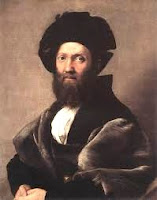The
Civil War History of the 57th Indiana
(#10 of 52)
Summertime in Alabama and Middle-Tennessee.
“On Monday, June 2d, Wood’s division
marched in the direction of Iuka, Mississippi, the point at which we were to
strike the Memphis and Charleston Railroad. We entered a broken country,
covered with pine timber, sparsely inhabited, and with but little good water.
The weather was excessively hot and the marching fatiguing.

“We marched at day-break for Tuscumbia
(Alabama), where we arrived at 10 o’clock a.m., and camped in the creek bottom
on the northeast of the town. Tuscumbia can boast of one thing which far
surpasses anything of the kind that I have ever seen in the country. I refer to
a large spring near town, which rises from beneath a wall of solid rock. Clear
as crystal it boils up, a vast and never-ceasing fountain, flowing off to empty
into the Tennessee. The distance from the fountain-head to the river is near a
mile, and the stream thus formed, which is quite large enough to be navigable
for medium sized steamboats, constitutes no mean tributary to the great river.
One particular feature of this water is its coldness, almost equal to
ice-water. There it gushes forth a never-ceasing volume, cold as the snows of
winter, producing quite an effect upon the temperature of the waters of the
main stream some distance below. The banks of the creek were lined with a dense
growth of shade-trees, making it a delightful place of resort during the long
and sultry days of June.

“Many plans were adopted to pass away
unoccupied time - reading, writing, playing cards, peddling lemonade.
Particularly, selling lemonade was quite a business with a few characters
throughout the camp, and “chuck-lucking,” or the throwing of dice, with money
at stake, was fast becoming a fashionable business through the camp. At almost
any hour of the day you might have seen groups of soldiers scattered along the
banks of the creek, intently engaged in the all-absorbing game. A few made
their hundreds, and perhaps, at times their thousands of dollars. The mania
spread until it became necessary to check it by orders from divisional headquarters.
An order was issued by Gen. Wood, declaring the throwing of dice or the playing
of any games in which money was at stake.

“We passed through Courtland, a
pleasant-looking little town, with two fine churches. The citizens turned out
to see us march through. We put on an unusual amount of style in our movements.
There were no demonstrations of Union
sentiment among them. We passed the
night in the street, sleeping on pavements, porches, and balconies, until
morning, when the regiment commenced crossing the river on the gunboat
Tennessee; two companies being ferried over at each crossing of the vessel. Our
wagons, which had not been unloaded, were also ferried over on the gunboat.

“Friday, July 4th,
Independence Day, in Alabama dawned clear and beautiful, without a cloud to
obscure the radiant brilliancy of the sun. A salute was fired at 6 o’clock
a.m., by the artillery. Drills, and all except picket duty, were dispensed with
during the day. At 11 o’clock the regiment formed, and marched to the camp of
Garfield’s brigade, to join the celebration. Arriving on the ground, the men
stacked arms, and exercises commenced with music by the band of the 64th
Ohio. (It was) then followed by a speech by Col. Ferguson, of the same
regiment. Music, “Red, White, and Blue,” and a prayer by the chaplain. Next
came the reading of the Declaration of Independence, by the adjutant of the 40th
Indiana volunteers. A salute of thirty-four guns was then fired. Next Gen.
Garfield made a speech, which was greeted with prolonged applause, and music by
the band. The usual dress-parade, at 5 o’clock, closed the programme of our
first Fourth of July in Dixie.
“During our stay in the vicinity of
Mooresville, wagons were sent to the neighboring plantations in search of corn,
which had been stored in great abundance, no doubt for the purposes of
furnishing subsistence to the rebel armies. Thousands of bushels were hauled in
by our trains and afterwards appropriated to the use of government.
Occasionally a detail of men would be sent to shell corn that had been gathered
that had been gathered which was ground at a mill nearby, and the meal issued
to the troops.
“There were still strict orders
against indiscriminate foraging, or pillaging by individuals or private
parties, though there never was a time when it was not indulged in to some
extent; and even the most stringent orders failed to prevent it. This was
particularly the case when we were on short rations, or in a region of country
where the people were known enemies.
“The custom of granting safe-guards to
citizens near our camps was also universal, and were granted in hundreds of
instances where the people were actual sympathizers with the rebellion. These
safe-guards usually consisted of a single soldier, or in some cases, a
non-commissioned officer and one or two men, were sent to protect the property
of citizens from being molested by any of the other troops. They were boarded
by the person with whom they stayed, and it was their duty to watch orchards,
gardens, potato-patches, rails, and to see that nothing was molested about the
house.”
(Alabama and Tennessee,
June-July, 1862)
Excerpts taken from “Annals of the Fifty-Seventh Regiment,
Indiana Volunteer Infantry: Marches, Battles, and Incidents of Army Life”
written by Asbury L. Kerwood immediately after the war.







































